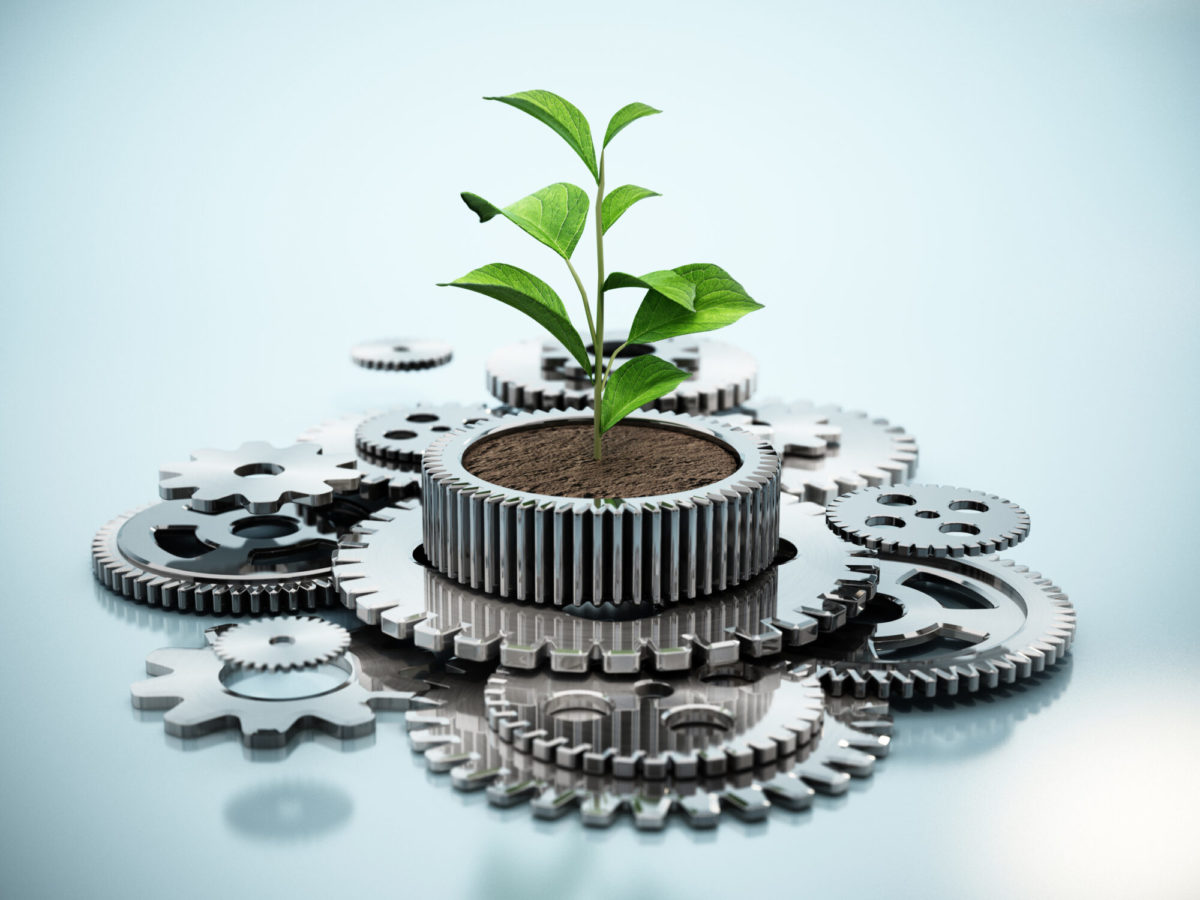If the term supply chain sustainability causes you to break out in hives, you’re not alone. With the number of challenges facing the supply chain (shortages, demand volatility, increased transportation costs, inflation), sustainability may not be at the top of your priority list. Additionally, you may not have the capital or resources needed to make a strong investment.
Despite these potential drawbacks, there’s good news: there are multiple benefits to building a sustainable supply chain, and you may already be reducing waste via supply chain optimization.
The bottom line is this: sustainability is a business priority for an increasing number of executives–and your customers–and having a sustainability strategy is becoming crucial to your business success.
What Is Supply Chain Sustainability?
Supply chain sustainability is the human and environmental impact of the process of getting your products from raw materials to finished products in the hands of consumers. It’s everything from raw material sourcing to production, storage, delivery, and transportation points in between.
The goal of sustainability is to minimize environmental harm from everything involved in your supply chain: energy consumption, water, waste, transportation, and carbon footprint. It also addresses issues such as human rights and fair labor practices.
The Importance of a Sustainable Supply Chain
With energy-intensive production and the transport of goods around the world, there’s no escaping the fact that the supply chain has a huge environmental impact. In addition, there are multiple supplier relationships to consider, which adds another layer of complexity. Therefore, making changes to the supply chain will yield the biggest results for companies on the road to sustainability.
The Business Case for a Sustainable Supply Chain: The Top 3 Benefits
Sustainability is not only good for the planet, it’s also good business. Take climate change for example. Business continuity is at risk when extreme weather conditions occur, a scenario we’ve seen play out repeatedly. Retail is a good example of a business that is susceptible to unpredictable weather. In retail, nothing is more consistently and directly impactful on demand than the weather because it influences consumer buying behavior everyday.
Meeting consumer demands and driving ROI
Consumers are becoming more concerned about where their products come from and how they’re produced. Furthermore, they’re willing to pay extra for products that can provide supply chain transparency.
The younger generations who rate sustainability high on their agenda will spend their money with companies that align with their values as their purchasing power and influence grow. A prime example is Gen Z, dubbed the sustainable generation, are willing to spend 10% more on sustainable brands.
More and more companies are recognizing the value of sustainability as a growth driver and competitive advantage. According to Gartner’s Signature Series: CEOs Concerns 2022-2023, 72% of CEOs believe environmental social and governance (ESG) disclosures are a worthy investment that will attract customers to them, while 70% believe it will draw investors. And it doesn’t end there. Environmental sustainability is one of the top three factors driving the need for new or improved products.

Facilitating growth and revenue expansion
Expansion into overseas markets is a natural growth trajectory for most companies but more and more countries and governments are demanding supply chain sustainability transparency and action.
If you’re operating or plan to expand into France, Germany, Denmark, or the UK for example, you may already be feeling the sustainability pinch, as these countries rank in the top ten of the world’s most environmentally friendly nations, according to the Environmental Performance Index (EPI) compiled annually by Yale University’s Center for Environmental Law & Policy.
Building a sustainable brand and corporate responsibility
If there’s any doubt in your mind about the importance of building a sustainable supply chain and the impact it can have on your brand, consider the embarrassing scandals involving a few well known multinational corporations.
Apple, Dell, and HP sourced electronics from overseas companies that required employees to work in hazardous conditions, and Nike and Adidas suffered fallout for using suppliers that were dumping toxins into rivers in China. So what does this all mean for your supply chain? The pressure for corporations to “go green” is on, and the brighter spotlight has the potential to showcase or tarnish your reputation.
Kyra Whitten, Vice President of Corporate Marketing, Communications, and Sustainability for electronics manufacturer Flex, said that supply chain sustainability has gained momentum since the start of the pandemic¹:
We’ve reached somewhat of a tipping point with sustainability amplifying the momentum that [it’s] not going to stop. We see the increased requirements from customers, from employees, from governments to act sustainably. This focus had really taken hold, and then Covid accelerated it.”
5 Steps to Building a Sustainable Supply Chain That Won’t Break the Bank
Now that we’ve established that building sustainability into your overall business strategy is an imperative because consumers, regulatory bodies, investors, and other stakeholders expect it, where should you begin? It doesn’t have to be a scary proposition. You can overcome your sustainability fears with careful planning.
1. Create a sustainability strategy
Start from the beginning by examining your entire supply chain network to identify sustainable weaknesses. Could you significantly reduce your carbon footprint? What about cutting waste by having the right inventory in the right place at the right time? Have products shipped locally instead of coming from locations halfway around the country or the world.
2. Right-size inventory
When you remove unnecessary inventory, you minimize the amount of space required for inventory and reduce overhead costs such as power, heat and real estate—and still meet or exceed service commitments.
Consider the fact that half the sustainability battle is won with inventory optimization and demand sensing. You may be thinking it can’t be that straightforward but hear me out. Inventory optimization reduces waste due to spoilage and obsolescence, and cuts greenhouse gas emissions by saving transportation, storage and labor resources. If you want to see how inventory optimization works in practice to support both financial objectives and sustainability goals, check out Absolut Vodka’s story.
One of the best ways to bake sustainability into your operations is not to create unnecessary items in the first place. Sounds easier said than done but that’s exactly what demand sensing aims to accomplish. Use demand sensing software to detect data at the point of sale and by channel to identify demand trends, trigger alarm signals, and respond faster to actual vs. planned supply chain events.
React faster to market changes before your competitors know what hit them.

3. Cut waste and carbon emissions
The supply chain sustainability discussion isn’t going away. In fact, it will intensify, especially here in the U.S. where the transportation sector is the largest contributor of greenhouse gas emissions. When you better anticipate customer demand, you reduce the need to expedite with LTL and air freight, along with costly in-network transfers from warehouse to warehouse. Rush orders also cut into profits so mitigate that problem by making sure your demand forecasting and inventory optimization efforts are on point.
Learn how to build a sustainable supply chain that saves money

4. Improve transportation efficiency
As mentioned previously, transportation is the largest culprit of greenhouse gas emissions but you can kill two birds with one stone—reduce transportation spend by 4-8% while reducing your carbon footprint when you utilize truckload optimization. By using demand data to build fuller truckloads that meet customers’ needs in the most cost-effective way, you will need fewer trucks to transport goods, thereby reducing your carbon footprint.
One large consumer packaged goods manufacturer had 9,000 fewer trucks per year, eliminating 6.2 million miles, a major cost reduction but also a significant reduction in carbon emissions. They’ve seen approximately 60,000 metric tons of CO2 reduced by leveraging a load building solution in their planning operation.
5. Watch, learn and act
Look to those companies who are doing a good job with building sustainable supply chains. What can you learn from them and implement in your own strategy? Is there a consortium or non-profit you can partner with to help you achieve your sustainability goals?
ConocoPhillips, an energy company that develops and produces crude oil says sustainability is an integral part of their supply chain and their suppliers play a major role. They’re constantly looking to improve business practices and operations to manage risk while increasing productivity and efficiency within the supply chain.
However, you don’t have to be a multinational company to build a sustainable supply chain and reap the benefits. RAJA Italy distributes more than 5,000 packaging and office supply products to 30,000 customers throughout the country, guaranteeing delivery in 24 to 48 hours.
Like many businesses, RAJA experiences supply chain complexity but along with a data-driven approach to their supply chain, and supply chain collaboration, sustainability is the other core pillar of their operations, allowing them to reduce their carbon footprint by optimizing deliveries, and choosing logistics partners closer to their customers.
For us the ecological impact of the supply chain is really important, starting from the selection of suppliers for both products and services, and also the optimization of deliveries.”
— Michela Vesta, Supply Chain PMO, RAJA Italy

Supply Chain Sustainability: The Business Case for Growth and a Competitive Advantage- ToolsGroup
Top Supply Chain Sustainability Trends
Trends are a great way to keep up with current practices, learn what’s working and what isn’t. Here are some of the top trends in supply chain sustainability:
1. Greenhouse emissions management
Forward thinking companies are creating a combination of digital, environmental, and engineering solutions to combat greenhouse emissions. Digital solutions create visibility of greenhouse gas emissions.²
2. Resource accessibility
COVID disruptions created challenges to getting raw materials to the right parts of the value chain when needed. Shifting to a circular economy is key to combating the resource issue. The benefits of the circular economy are increased efficiency, the creation of new revenue streams through the resale of products or offering products as a service, and increased customer engagement.²
Source: Gartner
3. Biodiversity and ecosystems impacts
Supply chains link their business operations into natural ecosystems through the extraction and utilization of resources. As such, endangerment of natural ecosystems significantly impacts supply chains. Two key actions must be taken to maximize resilience: understanding the threat of biodiversity loss in the medium and long term to the value chain, and based on your goals, identify where to intervene to halt ecosystem decline.²
4. Renewable energy sourcing
Businesses are taking control of their energy sourcing and investing in renewable energy as part of their product portfolio.³
5. More climate change disclosures
Firms will soon be expected to provide data on their actions to reduce emissions and limit energy consumption.³
Why Businesses are Making Sustainable Supply Chains a Priority
So let’s recap why you should make sustainability a priority for your supply chain:
- It can boost profits as more consumers adopt sustainable values and are willing to pay more for sustainable products
- It saves you money in the long run
- Governments, regulators and stakeholders require it
- It’s good for people and the planet
- It offers a competitive advantage
Building a sustainable supply chain that will weather the storms of the business world will take careful planning, strategizing and a sincere desire to positively impact people, the planet and your bottom-line. There is no magic bullet, however. Instead, think of it as a journey. And remember that mindset is just as important as the actions you take. That means building a company culture that values sustainability.
¹ State of Supply Chain Sustainability Report 2022 – MIT Center for Transportation and Logistics
² Gartner – 3 Key Trends in Supply Chain Sustainability
³ Sustainability Magazine – Top 10: Global Sustainability Trends for 2022
The source of this article is from ToolsGroup
By Glede Kabongo

